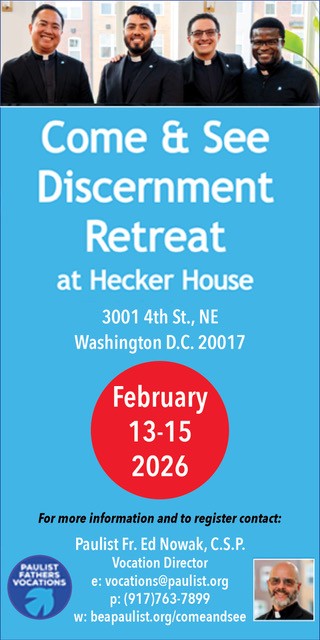A nonviolent movement of prayer, 40 Days for Life, has saved 14,000 children from abortion. So why is it now facing a backlash?
The recent chilly weather that most Californians describe as “freezing” failed to deter a growing group of pro-life volunteers from gathering outside the state’s remaining abortion clinics, taking turns to hold a 40-day, round-the-clock prayer vigil for the unborn.
These peaceful witnesses to life are ready to provide an alternative to any woman walking in for an abortion. This year, the international movement’s total number of “saves” (women who confirmed their decisions to continue their pregnancies) has reached a milestone of 14,000, and the number of participants in this pro-life group, 40 Days for Life, continues to grow.
One of the first “saves” is now a 17-year-old teenager. In 2004, when 40 Days had yet to become a national campaign, his mother went to an abortion clinic — but decided to choose life after speaking to the campaign’s sidewalk counselors.
The campaign’s president, Shawn Carney, told Angelus News of his surprise at how the time had flown by when he was introduced to the teenager at a recent local vigil.
“We never know the impact and that’s why we have to show up and we have to get out there,” he said. Meeting a child that escaped an abortion is nothing new, Carney added. “That happens at every campaign.”
California leads the nation in having the largest number of 40 Day campaigns, with a total of 40 prayer groups in the state. Internationally, the campaign can be found in 354 cities in 25 countries.
But while the campaign enjoys success, many pro-lifers are facing backlash from hostile government authorities. Pro-abortion lawmakers have created “buffer zones” around abortion clinics that forbid pro-lifers from speaking about alternative options.
“It’s insane,” said Carney. “It’s not that there can be no debate, it’s that only one side, only one viewpoint of the specific issue is not allowed to be spoken of.”
A council for the London borough of Ealing is steps away from passing legislation that would ban anyone from approaching women accessing their regional abortion clinic. The policy would also prohibit large groups from gathering, the display of distressing images and the use of loudspeakers.
In Canada, the provincial government of Ontario introduced similar legislation that went into effect earlier this year. “It is the complete opposite of the democracy of the West that we have seen thrive for the last 300 years in Western civilization,” Carney said. “But they want to silence the pro-life view in Canada and the U.K.”
Fortunately, Americans have been able to uphold their free speech rights. “Anytime this comes up in America, it’s always shot down. It doesn’t matter if you have a conservative judge, a liberal judge. It doesn’t matter,” Carney said. “And the same thing is always cited: that this is un-American. So thank God our rights have been preserved.”
But many pro-abortion legislators who push this kind of anti-free-speech policy, say that pro-life advocates are harassing women. “Intimidation and harassment of women who are accessing health care is an issue that affects everyone,” Parliament member Rupa Huq told U.K.-based news channel Sky News.
Carney said the pro-life movement is being misrepresented by a small minority of angry protestors. About 95 percent of the 40 Days participants come to the vigil to silently pray while a few trained sidewalk counselors offer to speak to women entering the abortion clinic.
Although stories of angry protestors may be true in a few isolated cases, that is never the approach of participants in 40 Days.
“Even the abortion workers will say, ‘Oh I know they’re not from 40 Days for Life,’ ” Carney said of the occasional angry and often solitary individual who shouts judgmental words at the women. Their hateful behavior “shows the distinction between what they do and what we do.” They are doing more harm than good and everyone knows it,” he added.
The use of graphic images of aborted fetuses at pro-life protests has caused contention among the pro-life community and with pro-abortion supporters.
Abby Johnson, a pro-life speaker and author, who once worked as a clinic director for Planned Parenthood before her conversion, said that graphic images only frighten women away, who might otherwise ask for help.
“The natural reaction for the woman is to turn her head away from the graphic images and run into the abortion facility, and that is what we have seen over and over again,” Johnson said. The number of “saves” always increases when the graphic images come down at abortion clinics, she added.
Carney agreed with Johnson on keeping graphic images away from clinics, but said that in some cases graphic images can serve a valuable purpose.
“They are extremely useful on college campuses, they are extremely useful in debates, they are extremely useful outside Planned Parenthood fundraisers,” he said. Otherwise, he discourages any graphic images at the vigils.
The success of the 40 Days campaign is in part due to the challenge involved, Carney said. Instead of supporting the unborn with a fundraising dinner or by cutting a check, participants have to stand in the cold and pray while fasting from certain foods or activities.
“Our Lord himself says some demons can only be driven out by prayer and fasting. The Church gives us this beautiful tradition of fasting for 40 days, modeling our Lord in the desert, modeling the biblical practice of fasting,” Carney said.
“And so it’s appropriate that when combating the greatest injustice — the greatest attack on the most innocent, smallest human being — that we would not be left to our own devices, but follow that richness of prayer and fasting, and that’s where we get our strength.”

